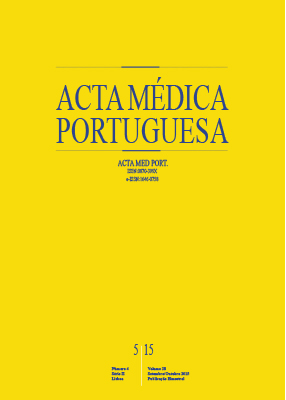Analysis of the Cochrane Review: Interventions for Improving Upper Limb Function after Stroke. Cochrane Database Syst Rev. 2014,11:CD010820.
DOI:
https://doi.org/10.20344/amp.7049Keywords:
Exercise Movement Techniques, Robotics, Stroke/rehabilitation, Systematic Review, Therapy, Computer-Assisted, Upper Extremity.Abstract
Impairment of the upper limbs is quite frequent after stroke, making rehabilitation an essential step towards clinical recovery and patient empowerment. This review aimed to synthetize existing evidence regarding interventions for upper limb function improvement after Stroke and to assess which would bring some benefit. The Cochrane Database of Systematic Reviews, the Database of Reviews of Effects and PROSPERO databases were searched until June 2013 and 40 reviews have been included, covering 503 studies, 18 078 participants and 18 interventions, as well asdifferent doses and settings of interventions. The main results were: 1- Information currently available is insufficient to assess effectiveness of each intervention and to enable comparison of interventions; 2- Transcranial direct current stimulation brings no benefit for outcomes of activities of daily living; 3- Moderate-quality evidence showed a beneficial effect of constraint-induced movement therapy, mental practice, mirror therapy, interventions for sensory impairment, virtual reality
and repetitive task practice; 4- Unilateral arm training may be more effective than bilateral arm training; 5- Moderate-quality evidence showed a beneficial effect of robotics on measures of impairment and ADLs; 6- There is no evidence of benefit or harm for technics such as repetitive transcranial magnetic stimulation, music therapy, pharmacological interventions, electrical stimulation and other therapies. Currently available evidence is insufficient and of low quality, not supporting clear clinical decisions. High-quality studies are still needed.
Downloads
Downloads
Published
How to Cite
Issue
Section
License
All the articles published in the AMP are open access and comply with the requirements of funding agencies or academic institutions. The AMP is governed by the terms of the Creative Commons ‘Attribution – Non-Commercial Use - (CC-BY-NC)’ license, regarding the use by third parties.
It is the author’s responsibility to obtain approval for the reproduction of figures, tables, etc. from other publications.
Upon acceptance of an article for publication, the authors will be asked to complete the ICMJE “Copyright Liability and Copyright Sharing Statement “(http://www.actamedicaportuguesa.com/info/AMP-NormasPublicacao.pdf) and the “Declaration of Potential Conflicts of Interest” (http:// www.icmje.org/conflicts-of-interest). An e-mail will be sent to the corresponding author to acknowledge receipt of the manuscript.
After publication, the authors are authorised to make their articles available in repositories of their institutions of origin, as long as they always mention where they were published and according to the Creative Commons license.









